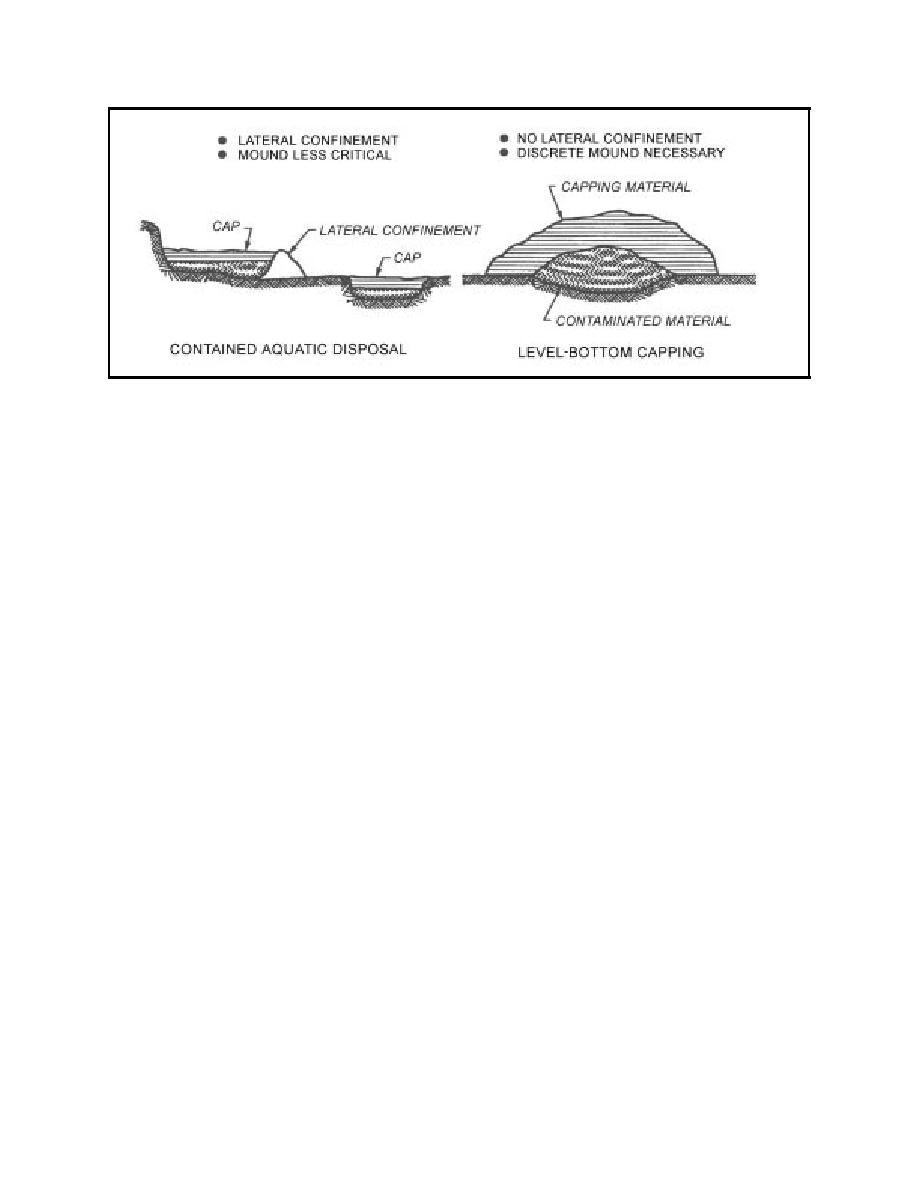 |
||
|
|
||
|
Page Title:
Dredged material capping versus in situ capping for remediation |
||
| |||||||||||||||
|
|
 Figure 1.
Schematic illustrating LBC and CAD
where the mechanical properties of the contaminated material and/or bot-
tom conditions (e.g., slopes) require positive lateral control measures dur-
ing placement. Use of CAD can also reduce the required quantity of cap
material and thus the costs. Options might include the use of an existing
natural or excavated depression, preexcavation of a placement pit, or con-
struction of one or more submerged dikes for confinement (Truitt 1987a).
Dredged material capping versus
in situ capping for remediation
Capping is also a potential alternative for remediation of contaminated
sediments in place or in situ. However, a clear distinction should be made
between navigation dredged material capping and capping in the remedia-
tion context. For dredged material capping associated with navigation pro-
jects, the sediment of concern would typically require capping because it
may exhibit potential for toxicity or significant bioaccumulation in benthic
organisms. Often these sediments are only marginally contaminated in
comparison with other sediments in the area. The objective of capping in
this context is to effectively eliminate direct exposure of benthic organisms
to the contaminated sediments and thus virtually eliminate potential ben-
thic toxicity or bioaccumulation.
For in situ capping in the remediation context, the sediments of concern
are sufficiently contaminated to warrant some sort of cleanup action. The
objective of capping in the remediation context may involve objectives
over and above isolation of the sediment from the benthic environment.
Guidance for in situ capping for sediment remediation is presented in
Palermo et al. (1996).
Design issues for capping
Capping is a contaminant control measure to prevent impacts. However,
dredged material capping requires initial placement of a contaminated
4
Chapter 1 Introduction
|
|
Privacy Statement - Press Release - Copyright Information. - Contact Us - Support Integrated Publishing |